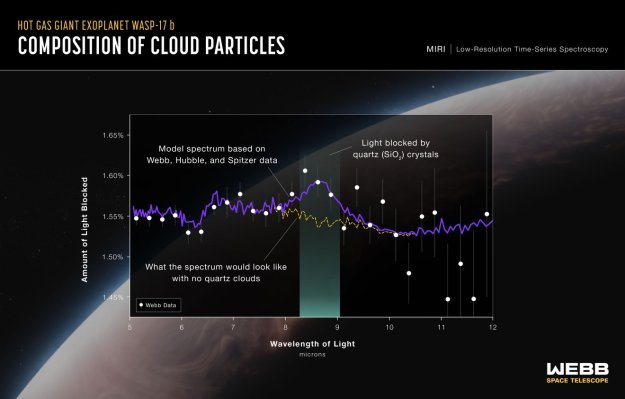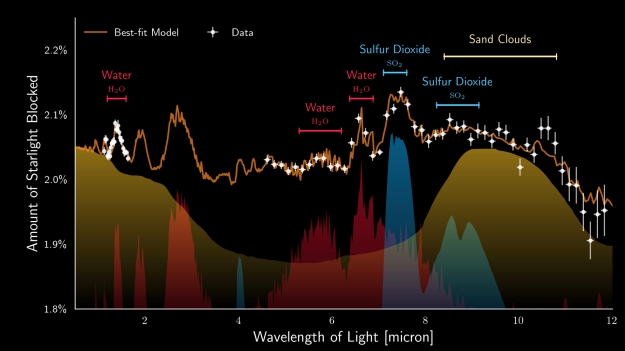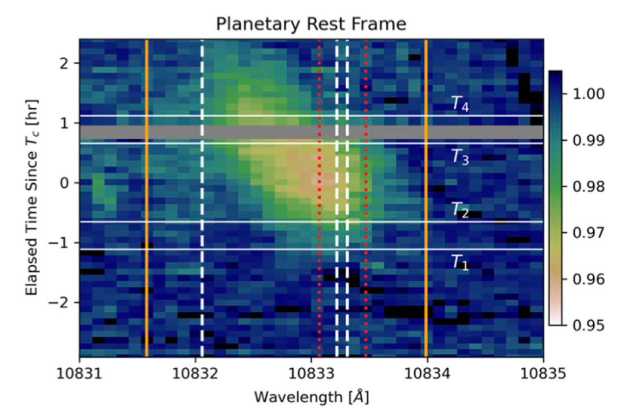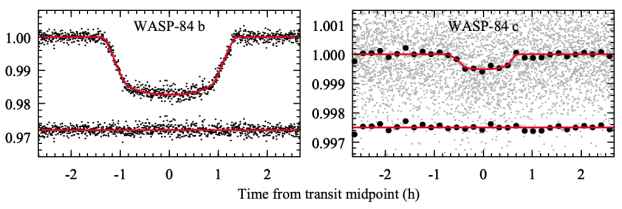NASA has put out a press release about JWST observations of the bloated gas-giant exoplanet WASP-17b.
“Researchers using NASA’s James Webb Space Telescope have detected evidence for quartz nanocrystals in the high-altitude clouds of WASP-17 b, a hot Jupiter exoplanet 1,300 light-years from Earth. The detection, which was uniquely possible with Webb’s MIRI (Mid-Infrared Instrument), marks the first time that silica (SiO2) particles have been spotted in an exoplanet atmosphere.”

Waves of light detected in the clouds of the hot gas giant exoplanet WASP-17 b revealed the presence of quartz (crystalline silica, SiO2), as shown in this graph. Credit: NASA, ESA, CSA, and R. Crawford (STScI).
“Silicates (minerals rich in silicon and oxygen) make up the bulk of Earth and the Moon as well as other rocky objects in our solar system, and are extremely common across the galaxy. But the silicate grains previously detected in the atmospheres of exoplanets and brown dwarfs appear to be made of magnesium-rich silicates like olivine and pyroxene, not quartz alone – which is pure SiO2.”
““We fully expected to see magnesium silicates,” said team member Hannah Wakeford, “But what we’re seeing instead are likely the building blocks of those, the tiny ‘seed’ particles needed to form the larger silicate grains we detect in cooler exoplanets and brown dwarfs.”

The atmosphere of the hot gas giant planet WASP-17 b, depicted in this artist’s concept, is composed primarily of hydrogen and helium, along with small amounts of water vapor and hints of carbon dioxide and other molecules. Credit: NASA, ESA, CSA, and R. Crawford (STScI)
“WASP-17 b is one of three planets targeted by the JWST Telescope Scientist Team’s Deep Reconnaissance of Exoplanet Atmospheres using Multi-instrument Spectroscopy (DREAMS) investigations, which are designed to gather a comprehensive set of observations of one representative from each key class of exoplanets: a hot Jupiter, a warm Neptune, and a temperate rocky planet.”
The press release has led to widespread coverage on websites and media outlets.















